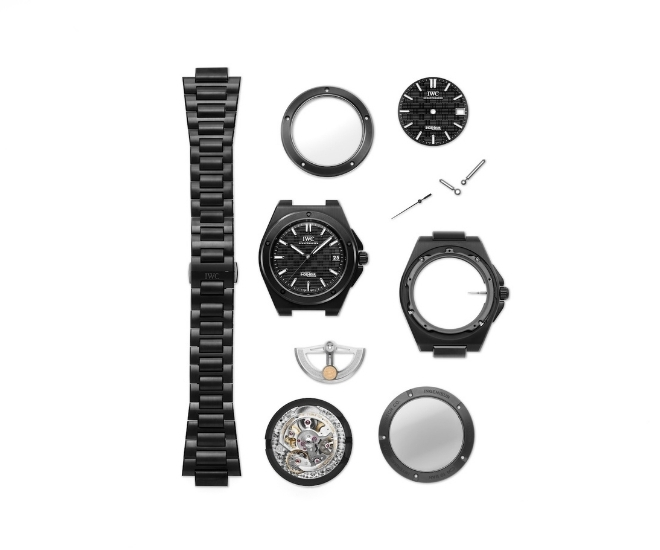On Tuesday, Apple announced a long-awaited gadget called AirTag. Users can attach the $29 coin-sized device to valuables like keys or a backpack, then locate it on a live map inside Apple’s built-in Find My software.
AirTag competes with a number of other products on the market, including from Tile, whose general counsel complained before Congress on Wednesday about Apple’s overall dominance.
But AirTag’s most important differentiating feature isn’t the technology inside the $29 coin-sized stainless steel gadget. It’s other people’s iPhones.
AirTag doesn’t have a GPS signal, which would rapidly drain its battery and raise privacy questions. Instead, when it’s attached to a lost object, it sends out scrambled Bluetooth signals. For those signals to reach the reach the internet and inform the person who’s looking for their lost device, they’ll need to find an iPhone that’s listening for them.
“Using Bluetooth and the hundreds of millions of iOS, iPadOS, and macOS devices in active use around the world, the user can locate a missing device even if it can’t connect to a Wi-Fi or cellular network,” Apple explained in a security disclosure about the Find My service. “Any iOS, iPadOS, or macOS device with ‘offline finding’ enabled in Find My settings can act as a ‘finder device.”
The product represents a new frontier for Apple: Using its install base of over 1 billion iPhones as infrastructure to build services that its competitors can’t. Now iPhones are part of a physical network out in the world that’s looking out for stolen goods — even if their users have never purchased an AirTag.
“The bottom line is AirTag is an example of Apple leveraging its ecosystem to create a more compelling product than what is currently in the market,” Loup Ventures founder Gene Munster wrote in a newsletter on Tuesday. “Specifically, AirTag will have better navigation and discovery features, along with a billion-plus device network that can be utilized to help locate lost items.”
Enrolling in the Find My network does have benefits to iPhone users who don’t buy AirTags. Many users sign up because the same app can be used to find lost Apple products, and it’s easy to do when signing into an iCloud account on an iPhone.
The Find My network can be used to find an iPhone after it’s been shut off, as thieves often do after stealing a phone. (If the device is on, it can be contacted through Find My iPhone, a similar service that uses the device’s internet connection and predates the Find My network.)
Users can also opt out of the Find My network in Apple’s settings, although that means they don’t get the benefits of the network, like finding devices that have been turned off or aren’t connected to cellular or Bluetooth. (To do so, go to Settings > Your Name > Find My > Find My iPhone > and then toggle “Find My network” on or off.)
A vast, global network
The number of devices participating in the network is crucial for a product like AirTag.
Apple describes its Find My service as a “vast, global network” and allows third-party accessory makers to release products that use it, too.
If an AirTag is lost in the middle of a desert with no Apple devices in Bluetooth range, it can’t connect to the internet to send signals or update the user’s map. But in the middle of an American city, where an estimated 42% of people have iPhones — more in some areas — you’re much more likely to find a device that’s looking for your lost AirTag.
Apple CEO Tim Cook has previously described Apple’s product strategy as “only Apple,” suggesting that because the company builds hardware, develops software, and runs its own online services, it can introduce features that rivals like Microsoft, Google, or Samsung can’t.
While Samsung or other major smartphone vendors have similar numbers of phones in people’s hands, they don’t control the underlying operating system, making features like Find My much more difficult to implement widely at once.
For Apple, AirTag is probably an effort to add distinguishing features to its iPhone to discourage current users from switching to an Android device. It’s not likely to be a major revenue driver.
“While the Airtags are incremental to our model we do not believe even a very successful launch of that product will have much impact on our forecasts given the low $29 price point,” Goldman Sachs analyst Rod Hall wrote in a note on Tuesday.
If Apple becomes more skilled at using its installed devices as privacy-sensitive infrastructure, it could represent a durable advantage for the company. Apple’s installed base of iPhones could become especially important as it invests heavily in augmented reality, a technology that merges the physical and digital worlds.
A network of location-aware iPhones could be used in augmented reality apps like Pokemon Go, for example, to identify where other players are competing and start a group experience. It provides the sensors and internet connection needed building for digital experiences in the real world without building new equipment each time.
The privacy angle
AirTag also represents a major test for Apple’s privacy positioning.
Since 2015, Apple has advertised privacy and security as major differentiators for its iPhone. It has consistently built systems, like Covid-tracking exposure notifications, that are decentralized, which means that they are designed in a way that data is processed and calculated on a device, instead of on servers that Apple can access.
Apple is building on that reputation to assure customers that its Find My system won’t leak user location or data when acting as a finding device. Apple says that the Find My network keeps location data private and anonymous, and that it doesn’t store location data or history.
How Apple pulls it off is a matter of complicated software engineering. “Find My is built on a foundation of advanced public key cryptography,” Apple’s security disclosure says.
Now Apple’s users will need to decide whether they understand and trust the Find My network and Apple — both as users of them, and as iPhone users participating in them to make them work better.




